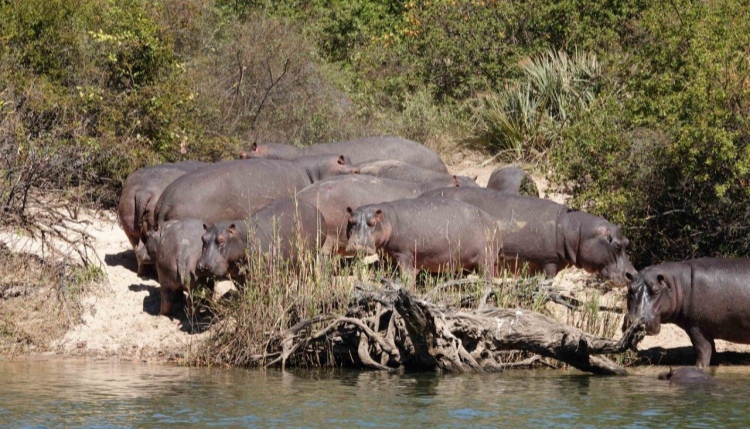Zambia is a treasure trove of biodiversity, home to a rich variety of wildlife species that attract nature enthusiasts and researchers alike. Its diverse ecosystems, ranging from savannas to wetlands, support numerous unique species that are endemic to the region. Here are ten unique wildlife species you can find only in Zambia:
1. Zambezi River Horse (Hippopotamus)
While not exclusive to Zambia, the Zambezi River is renowned for its large population of hippos. These semi-aquatic mammals are often seen in the river, where they spend most of their days submerged to keep cool. The Zambezi hippos are a vital part of the ecosystem, influencing the river’s structure and health.
2. Zambian Blue Lizard (Trachylepis varia)
The Zambian Blue Lizard is a strikingly colorful reptile native to the region. Known for its vibrant blue coloration, it can be found in various habitats, including grasslands and wooded areas. This lizard is a testament to Zambia’s unique herpetofauna.
3. Kafue Lechwe (Kobus leche kafuensis)
The Kafue Lechwe is a subspecies of the lechwe found only in Zambia’s Kafue Flats. Adapted to wetlands, these antelopes have elongated hooves that allow them to navigate the marshy terrain. They are known for their striking reddish-brown fur and graceful movements.
4. Zambian Red-Masked Weaver (Ploceus zmouthi)
The Zambian Red-Masked Weaver is a colorful bird endemic to Zambia, known for its vibrant red mask and yellow body. These social birds build intricate nests in colonies, often found near water bodies. Their unique appearance and behaviors make them a fascinating sight for birdwatchers.
5. Lichtenstein’s Hartebeest (Alcelaphus lichtensteinii)
Lichtenstein’s Hartebeest is a medium-sized antelope found primarily in Zambia’s national parks, such as Liuwa Plain. Characterized by its slender build and distinctive facial markings, this species prefers open grasslands and is known for its agility and speed.
6. Zambian Ground Squirrel (Xerus rutilus)
The Zambian Ground Squirrel is a small rodent endemic to the country. These social animals live in colonies and are often seen foraging for seeds and nuts in the savanna. Their playful nature and unique burrowing habits make them an intriguing species to observe.
7. Zambia’s Endemic Fish Species
Zambia is home to several endemic fish species found in its lakes and rivers. Notably, the Zambezi Yellowfish (Labeo capensis) and various cichlid species in Lake Tanganyika highlight the country’s rich aquatic biodiversity. These species are essential for the local ecosystem and contribute to Zambia’s fishing industry.
8. African Wild Dog (Lycaon pictus)
While not exclusive to Zambia, the African Wild Dog has a significant population in the country, particularly in the Luangwa Valley and Kafue National Park. This endangered species is known for its unique social structure and cooperative hunting strategies. Zambia’s efforts in wildlife conservation have helped stabilize their numbers.
9. Zambian Elephant (Loxodonta africana)
Zambia boasts one of the largest populations of elephants in Africa, particularly in the South Luangwa and Kafue National Parks. The Zambian elephants are known for their impressive size and unique tusk shapes, adapting to various habitats across the country.
10. Zambia’s Endemic Butterfly Species
Zambia is home to several endemic butterfly species, including the Zambia Leaf Butterfly (Kallimoides zambianus). These butterflies are often found in specific habitats and play a crucial role in pollination. Their vibrant colors and unique patterns make them a delight for entomologists and nature lovers.
Zambia’s unique wildlife species contribute to the country’s rich biodiversity and ecological significance. From the vast plains of Kafue to the lush wetlands of the Zambezi, Zambia offers a unique opportunity to witness these incredible species in their natural habitats. As conservation efforts continue, protecting these unique wildlife species is essential for preserving Zambia’s ecological heritage and promoting sustainable tourism.






